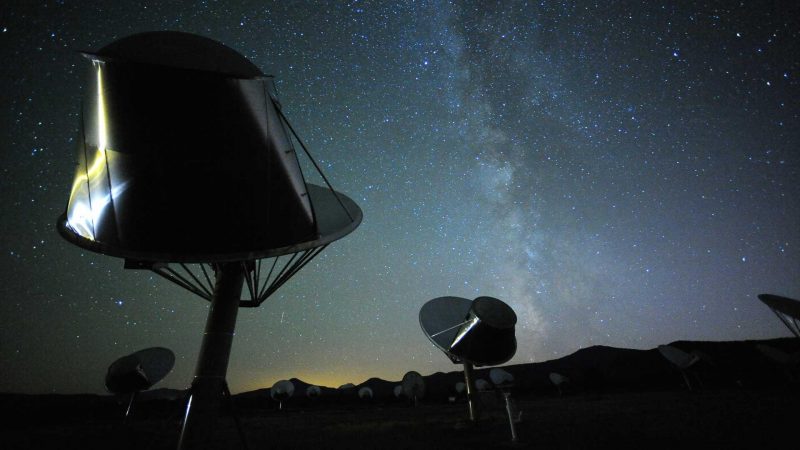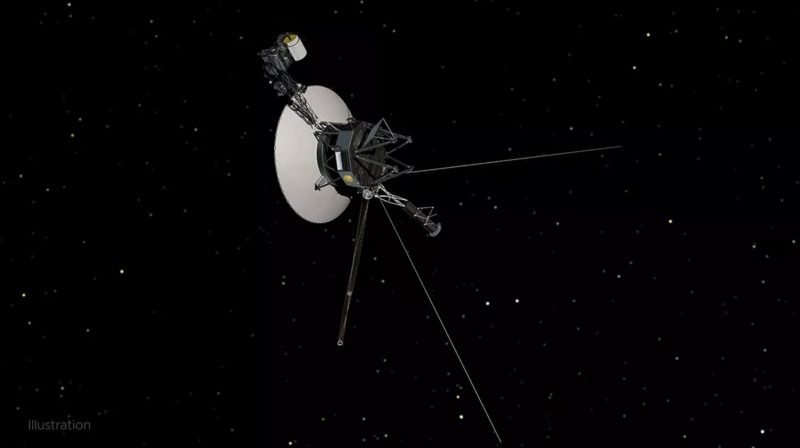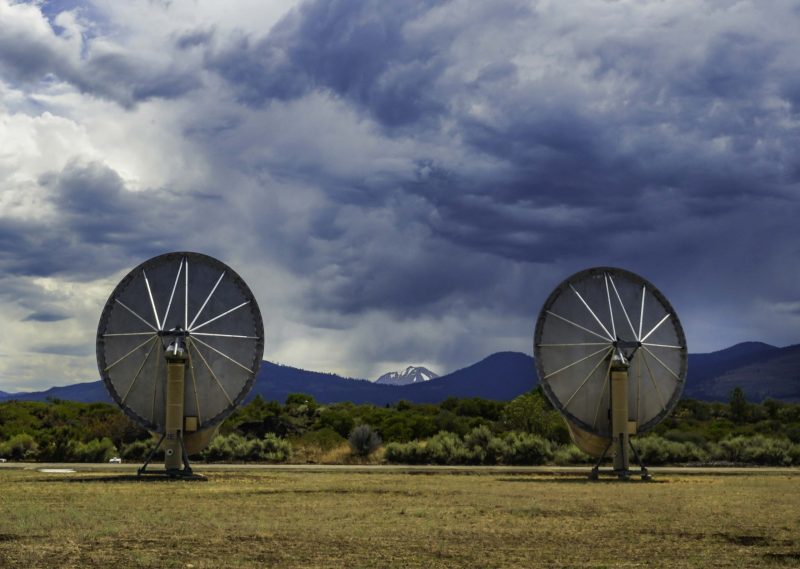
On August 24, 2022, SETI, the Search for Extraterrestrial Intelligence, announced that its telescope, the Allen Telescope Array (ATA), had picked up signs of intelligence. These signs came from NASA’s Voyager 1 spacecraft, the farthest human-made object from Earth. The ATA has been undergoing an upgrade since 2019, and on July 9, 2022, as part of a test of its new capabilities, it was able to detect the Voyager 1 carrier signal.
At the time of this writing, almost 45 years after its launch, Voyager 1 is about 23.4 billion km (14.6 billion miles) from Earth. Voyager 1, along with its twin Voyager 2, is on a mission to explore the boundaries of the heliosphere and the interstellar medium.
Wael Farah is a radio scientist for SETI. Farah spoke to EarthSky about this “discovery” of the Voyager 1 signal, and what it might mean for finding intelligent life in space that’s not from Earth.
SETI telescope, the Allen Telescope Array
The Allen Telescope Array (ATA) is unique, designed specifically to look for extraterrestrial intelligence. The telescope array’s name comes from donor Paul Allen, the co-founder of Microsoft. These 42 radio antennas are at Hat Creek Observatory, which is about 300 miles north of San Francisco.
Since 2019, the ATA has been undergoing upgrades. To test the success of the ATA’s upgrades, Farah set about searching for intelligent life as we know it … Voyager 1. Farah explained why he went on a hunt for this plucky spacecraft from the ’70s:
Voyager 1 is currently the farthest human-made object from our home planet. Moreover, Voyager’s signature is fairly similar to what we are trying to search for when performing radio SETI science. Therefore, it’s just natural to try and observe and detect this particular space probe.

Discovering Voyager 1
EarthSky asked Farah how it felt “discovering” Voyager 1 with the upgraded ATA. Farah said:
It was indeed absolutely like making a discovery. Although we knew relatively where to search for it, finding the signal was no easy feat, just like any other scientific discovery. It was a moment of relief when I saw that small little line pop up on my computer screen. It represents the culmination of three years of hard work by a relatively small team that I am a very proud member of.

From Voyager 1 to alien intelligence?
EarthSky asked Farah what the success of finding the Voyager signal means for the ability of ATA to find intelligent life in the universe that’s not ours. Farah responded:
Detecting Voyager gives us confidence in our ability to find other artificial signals. One of the ways to do radio SETI is to search for narrowband transponders or beacons emanating from other worlds, exactly like the transponder Voyager has on board. Now, one can test their observing setup with simulated and fake data, but nothing is better than a real signal. If we are able to pick up Voyager’s carrier with the ATA, we are boosting our confidence that we can blindly detect a similar artificial signal coming from somewhere within our galaxy.

Detecting intelligence beyond Voyager 1
Voyager 1 is just outside our solar system, about 14 billion miles (23 billion km) from Earth as of this writing. EarthSky asked Farah: To find an alien probe drifting through space with the ATA, would it have to be within the range of where Voyager 1 was (drifting through or close to our solar system)? Farah said:
Although possible, it is not necessary. It all depends on the strength of the transmitter we are looking for. Obviously, a beacon halfway across our galaxy has to be a few orders of magnitude brighter than Voyager 1’s transmitter (owing to the inverse square law for the strength of propagating light) to be detectable. Such strong transmitters are already within our current technological capabilities, and therefore it is fair to assume ET could be utilizing them.

And if a SETI telescope ever detects intelligence?
Finally, EarthSky asked Farah what would it mean for the world if the ATA ever picked up an intelligent signal. Farah said:
The ATA would be answering the ‘Are we alone?’ question, one that we as a human species have profoundly set to answer. Detecting life beyond our planet would definitely be a huge discovery, probably the biggest in a century. This might happen within the next two, five, 10 or maybe 50 years, but I personally hope I would be around when this happens. And we have a good chance (!) given technological advancements in hardware and software.
Bottom line: The SETI telescope known as the Allen Telescope Array detected Voyager 1’s signal in interstellar space. EarthSky thanks SETI astronomer Wael Farah for helping us to understand what this means for finding intelligence in our galaxy.
Read more: Voyager 1 mystery: Sending random data
Read more: Why are the Voyager spacecraft getting closer to Earth?
The post SETI finds sign of intelligence, and it’s our own Voyager 1 first appeared on EarthSky.
0 Commentaires